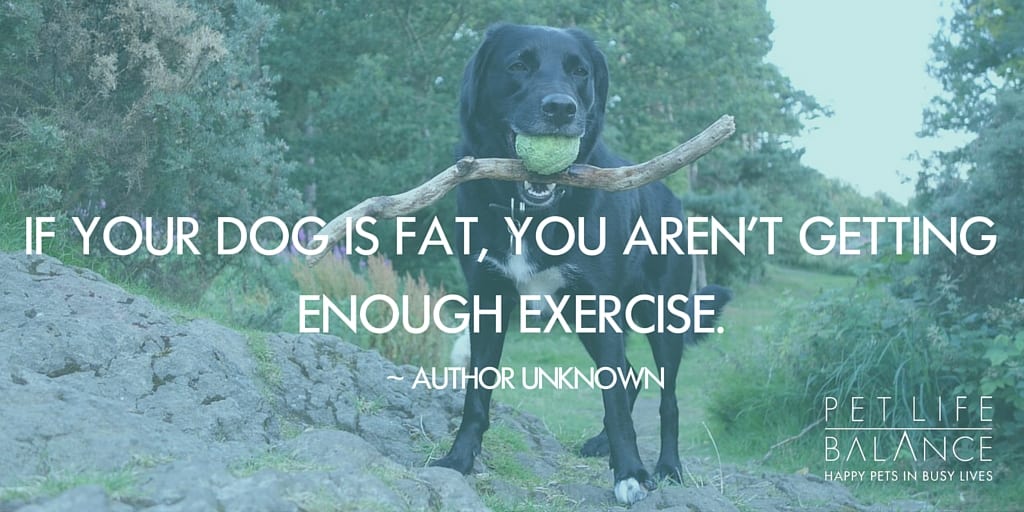In January magazines abound with fitness articles providing solutions to overindulgence during the festive season, which magically cause waistlines to shrink. Good Luck!
For you, there’s no shortage of advice available, but what about your best friend? No, not the one you drag to the local slimmer’s club. We’re talking about your reliable and cuddly four-legged friend, be it dog, cat or rabbit. For them, it may not only be the abundant festive fare to blame.
Unconditional love from our pet is often rewarded, without a second thought of the consequences. Some may say they even have us trained in the art of treat provision! We then fail to notice our companion is piling on the pounds; we simply love them regardless.
So, whilst planning your own health programme, it’s also a great time for a health check for your pet. Overweight pets are frequently the focus of ‘fun’ in social media, but it’s no laughing matter. When we ignore those extra pounds the consequences can be serious, or, even fatal. When carrying extra kilos, many issues can arise for your pet like:
- Increase strain and workload on the heart and other vital organs
- Diabetes
- Skin conditions, presenting in folds of skin
- Restricted breathing abilities
- Movement restrictions decreased joint mobility and increased likelihood of injury
There are many more conditions that could occur, more generally, your pet is likely to show decreased stamina and reduced activity levels, which compounds the problem. The bottom line is – being overweight will shorten your pet’s life.
I know that soulful face is hard to reject, but your pet is not to blame! Moreover, they can only rely on you to do something about it.
We know the cause… love. So what about the solutions?
Plan the weigh-in
If you can comfortably hold your pet, weigh yourself first, then lift your pet and weigh again whilst holding still, then do the arithmetic. For the bulkier breed, a visit to your vets’ surgery will be in order. Most vet practices will not charge for a weight check, give them a call to arrange an appropriate time.
There is lots of online info on breed specific weight averages, this often varies between sexes. Mixed breeds can be a little trickier, but if in doubt, call your vet and ask for advice on target weight. Size, age and stature all need to be taken into consideration.
The Equation: In/out…
Intake – review meal size and if you use a commercially available food, check the packaging for recommended guidelines on portion size. Measure/weigh portions to get a visual idea of the amount you should be feeding. Pouring straight from the pack, or feeding on demand is a common mistake.
Read the packaging labels, for both meals and treats and consider frequency, content and composition. Labelling with long lists of ingredients can be very confusing but worth taking the time to review. Sometimes a change of food type, for example, a food with less carbohydrate content can make a tremendous difference in your pet’s weight and health, it’s not always just about quantity.
Introduce new foods slowly, mixing with your pet’s usual food and gradually adjust quantities to avoid any tummy upsets. This also allows you to establish if there are any ingredient intolerances.
Keep a food diary for your pet – don’t cheat! This will let you recognise just how often you present treats to the adorable face in front of you. If your pet is food oriented, consider using a portion of their normal daily meal as treats, then reduce the base meal accordingly. If you are worried or confused, ask for advice from your vet.
Output – energy expended = calories burned
Sounding familiar? Yes, it’s no different for you or me.
Plan exercise based on pet age, size, breed, energy levels and taking account of any existing health/medical conditions. Make sure you embark on graded exercise – you wouldn’t attempt a full marathon in week one, nor should your pet!
Due to home circumstances, you may need to think creatively when increasing your pet’s activity levels. Remember all activities count, so increasing play sessions like hiding/pull-toy in the house, or chasing in the garden burns calories too. The added bonus is you spend more valuable time with your pet, you gain stronger bonds and you exercise and keep fit too!
A word of caution, if your pet is excessively overweight and/or has a medical condition please seek the advice of your vet before embarking on pet boot camp! Any sudden weight variance (up or down) could potentially be a sign of a more serious condition and should always be promptly checked by your vet.
Conclusion
This advice not only applies to our canine friends, but also to cats and other pets that share your life. By investing a little more time and effort in the health and diet of your family pet, you are likely to be rewarded with many more happy years of love and companionship. Who knows, you may even shed a few extra pounds too!
If you have liked what you’ve read so far, please do us a favour and share this with your friends and family on social media. They’ll thank you for the advice!
If you would like to know more, download this free guide below with six more tips to help reduce your dog’s waistline. You’ll also be kept up to date with new dog related articles, guides and special offers.
Click the download button below.
Thank you!


